Lucky pieces and
Spoon Pins


Lucky pieces and
Spoon Pins


When Stieff opened the new factory at 800 Wyman Park Driveway in Hamden, many people wanted to come and tour the building and beautiful grounds. Stieff was happy to give tours and give a small gift to the visitors.
In the beginning people received a large Sterling Silver “Lucky Piece” the size of Fifty Cent coin. Later these tokens were reduced in size to that of a quarter sized coin.


When the factory opened in 1925, Sterling Silver “Lucky Pieces” were given out to people that toured the new building. These are the size of a Fifty Cent Piece.
These very rare early pieces feature the one story building.
(This Lucky Piece was given to me by Charles C. Stieff II, but returned to the Stieff family)
In October 1929 The Stieff Company completed a second story addition to the factory and the Lucky Piece had to change to reflect the new look. Before the tour started, names would be collected and an engraver would quickly engrave the tokens with the visitors name while the tour took place... ending up in the Stieff factory retail store of course where the pieces would be delivered.
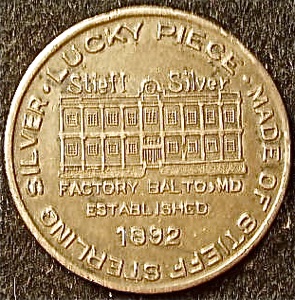
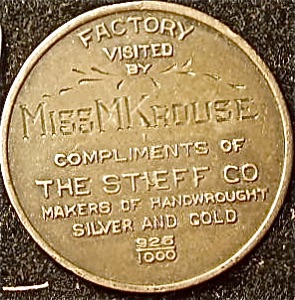
This this style token was used next. It features a severe straight on look at the building.
The company now boasts of making Silver and Gold.
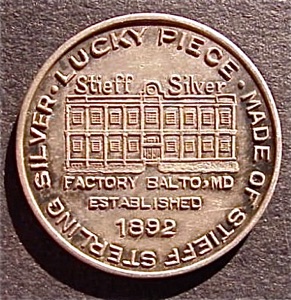
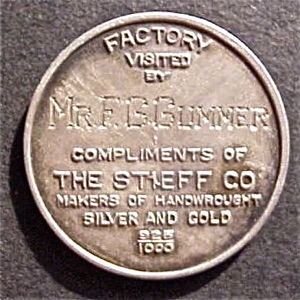
Fifty Cent Piece Sized Sterling Silver Tokens given to visitors to the Stieff
Factory after the second story was added. They were engraved with the
visitors name while the tour was in progress.
Examples here are enlarged to show detail.
The next generation of token has a 3/4 view of the factory. (later 1930’s)
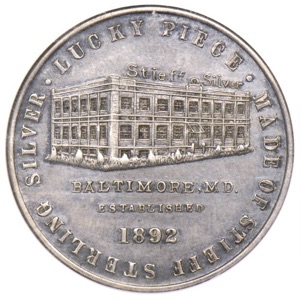
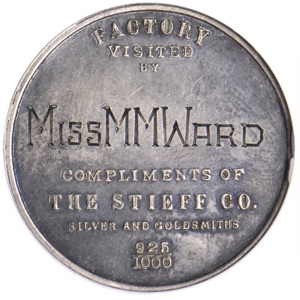
Post WWII
Later, spoon pins made in the style of the various Stieff Patterns were made. These were salt spoons with pins attached to the backs. People touring the factory were given the option of receiving a Spoon Pin or a Lucky Piece.
Note: Spoons with the STEIFF name on the BOWL of the spoon are SILVER PLATED and
not sterling silver More about these spoons at the bottom of this section
While I have seen spoon pins engraved with names, like the Rose pattern “Marge “ posted below, I do not know if that engraving was done at the factory or the work of some later engraver. I have seen some “plain” handles with names engraved on them also.
Spoon pins were also available for retail sale at Stieff Stores and other
fine retails through out America.
Spoons shown below are in no particular order

Homewood
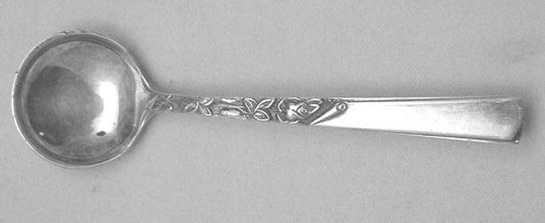
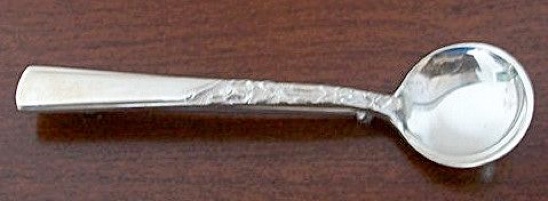
Rose Motif
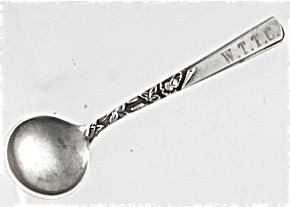
This pin carries the call letters of local Baltimore TV Station WTTC.
Perhaps a reporter took the Stieff Tour

Corsage



Queen Anne

Rose

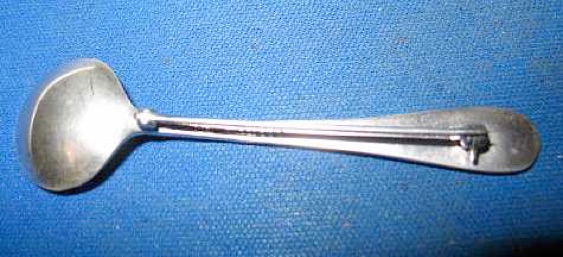
Betsy Patterson Plain


Puritan

Lady Claire


Silver Surf



Forget-Me-Not


Carrollton
Spoon Pins were also given out when you ordered a
place setting of Silver and registered your pattern at
a Stieff Store, Department Store or Jewelry Store
NON STERLING SILVER PINS ISSUED IN 1979 and 1980s.
These are just shells stamped out with the same look from the front.
If you didn’t turn them over, you would never know the difference.
These spoon pins are SILVER PLATED


As silver prices soared in 1979-1980 these were given out at the factory
The STIEFF name is stamped on the back of the bowl.
The Silver Plated spoons have the STIEFF name on the BOWL of the spoon and not the handle. They are of a high quality silver plate that will “acid test” as sterling
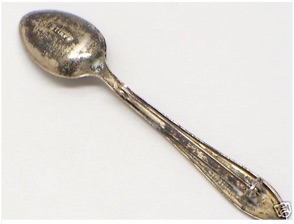
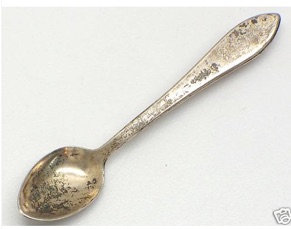

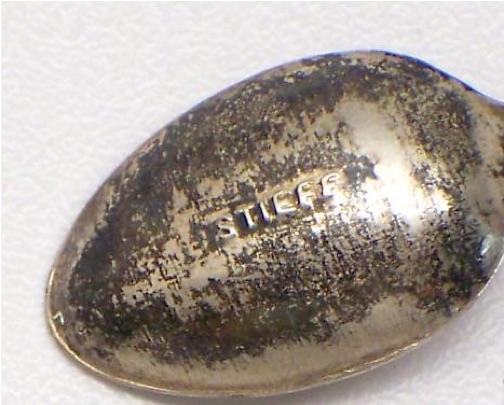
Below, an example of PURITAN in plated form, hollow back
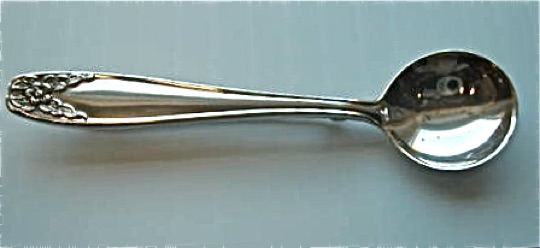

A 1955 ad for Spoon Pins is shown here
Click below
While doing research at the Baltimore Museum of Industry, I was given access to the original files of The Stieff Company. The files were donated to the museum when Lenox shut down Kirk Stieff in 2000. Amongst the many interesting items were these five mint condition (except for tarnish) tokens. The larger piece on the left being the oldest, featuring the one story factory. The next pieces are also Fifty Cent size, the last two the size of Quarters.


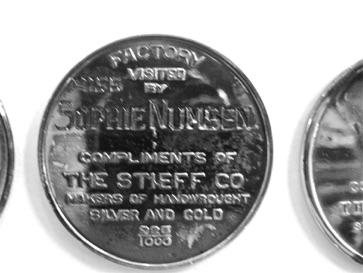
Miss Sophie Numsen was a Stieff relative. Interesting that she never picked up her token, and that it was still around at the Stieff factory in 2000 when the donations were made to the museum. This token would be from the 1930’s
I encourage you to visit the Baltimore Museum of Industry when you are in Baltimore. It showcases the industrial side of this great city.
www.thebmi.org
A new token was created in 1984 with the new
KIRK STIEFF logo. Here is an example in the form of a keychain.
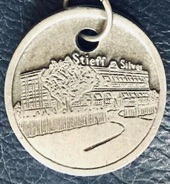


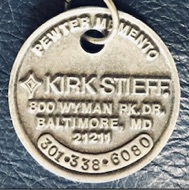
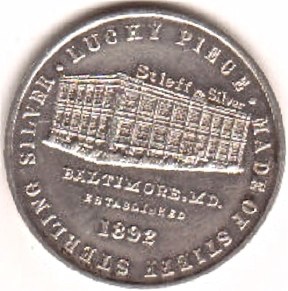
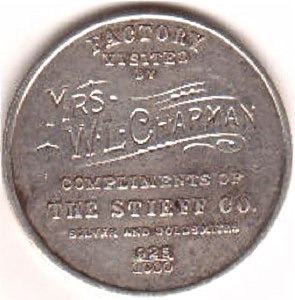
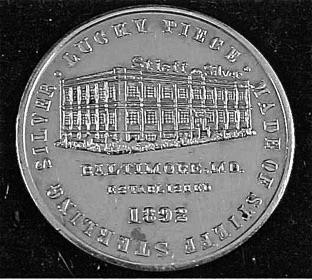
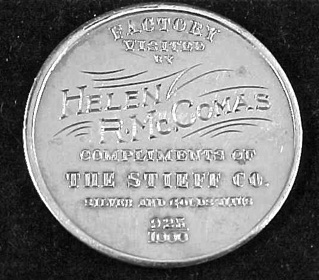
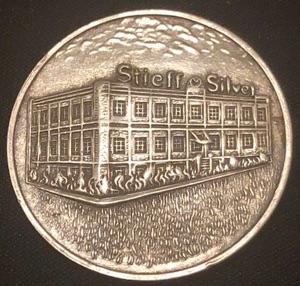
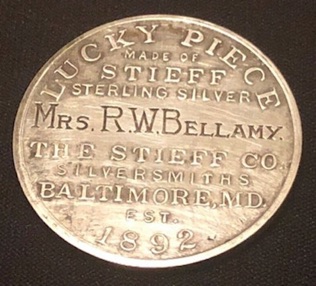
The late 1950’s brings us a version where LUCKY TOKEN and Est. 1892 is moved to the back. The bushes in this one look like they are flames, licking at the building.
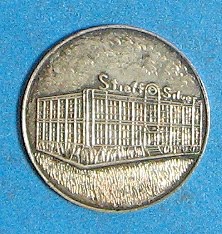
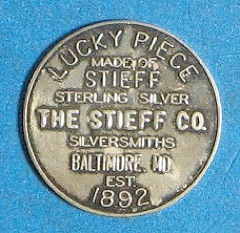
1960’s
Later the pieces were still made of sterling, but engraving had stopped.
Note that the grass has changed from the above version. (Quarter size)
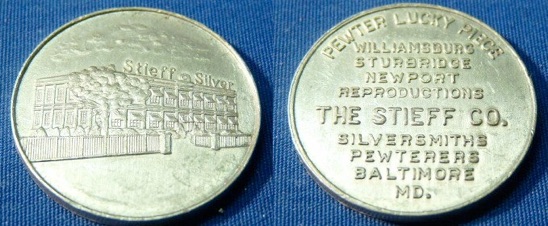
In the pewter version of the tokens, a fence has been added, the grass on the front lawn
has been replaced with smoothness. The EST. 1892 is missing too.
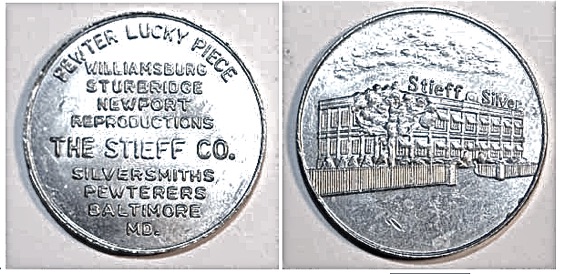
In the late 1970’s the tokens were made of pewter, as the price of silver had risen ten fold. The Stieff family says that after the change was made to pewter, the quarter size tokens started appearing in Coke machines all over Baltimore.
Note: a version of the above coin with the fence in front of the Stieff building was also made in Sterling silver, as seen in the group photo a bit farther below, far right. The Sterling version still has the EST. 1892 on the reverse.
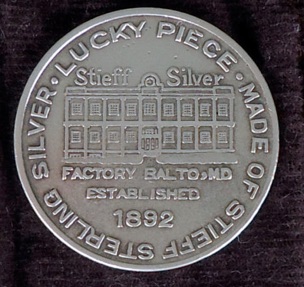
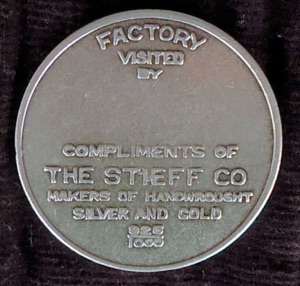
A well worn, but un-engraved token, early 1930’s
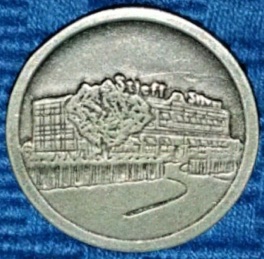
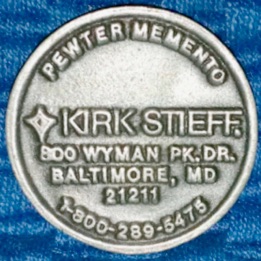
1984 or later brought a soft remembrance of the Stieff building from years past. In 1970 a large expansion covered the left side of the building, so it had not looked like this for many years. This version has the “800” number.
This site, THESTIEFFCOMPANY.COM receives no money or compensation from any of the references or companies listed on this site. We wish to thank others for the use of material from their sites and it is published here as an educational tool only. Some images have come from unknown original sources. If I have used your image without credit or if it needs to be removed, please contact me. We encourage visitors to venture to the other sites shown on this one to learn more about silver and view the images of craftsmanship that they share with all of us. Ad revenues from the google ads helps me maintain this site for the use by silver collectors and those who are just “wondering” about their grandmothers silver and what’s what in the silver chest. I do not make a profit from the publication of this site, it is for educational purposes only.
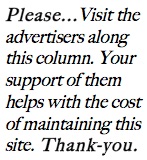
When Stieff bought Kirk in 1980, the famous Kirk pattern REPOUSSÉ was also reproduced in
the new “shell” stamped form, and silver plated. Here is what those look like. Notice, the LACK of the word STERLING. The S. Kirk & Son hallmark is on the back of the handle.
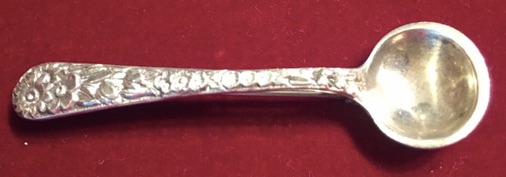


Unlike the Stieff versions, the KIRK name is on the back, not the bowl of the spoon.
